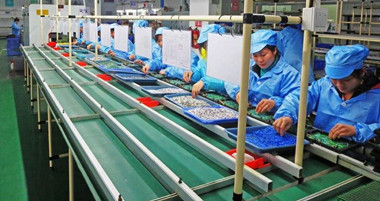| English | 简体中文 |
|

Through-Hole Assembly (THA) refers to the process of assembling electronic components with leads that are inserted into holes drilled in a printed circuit board (PCB). Here's an overview of the Through-Hole Assembly process:
Through-Hole Assembly is a reliable and well-established method, particularly for components that require mechanical strength and stability. While surface mount technology (SMT) has become more prevalent in recent years, Through-Hole Assembly is still widely used, especially in applications where larger components, high reliability, or specific mechanical requirements are essential.